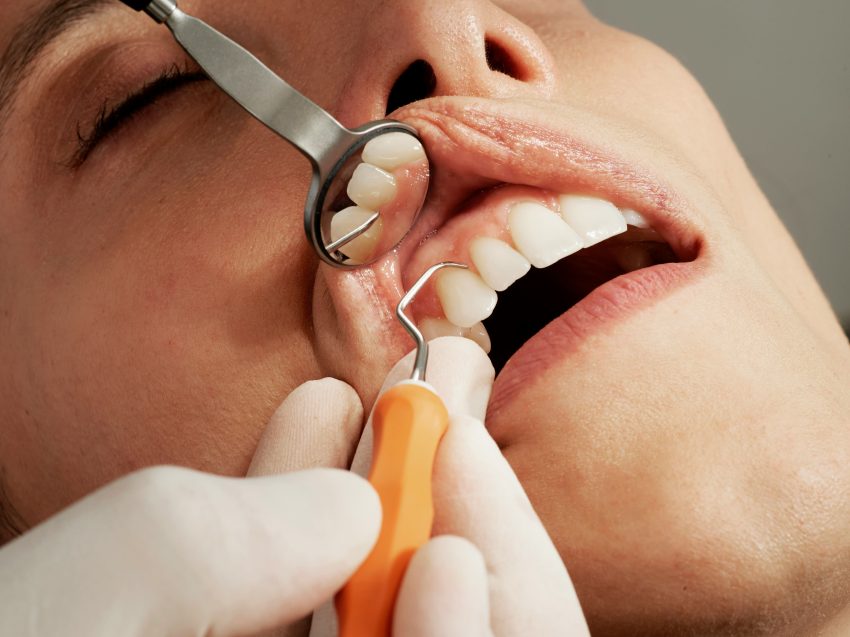They say that a smile is the universal language of kindness, and indeed, it transcends cultures and borders, radiating warmth and positivity. But beyond its universal appeal, a smile is also a reflection of something profoundly personal – our oral health.
In this article, we’ll explore oral health and offer effective tips for healthy teeth that can help us attain and maintain good dental status.
Mastering the Art of Toothbrushing
Select the Right Toothbrush and Toothpaste
- The Brush: Choosing a toothbrush can seem daunting given the array of options available, but fear not – it’s simpler than it appears. Opt for a soft-bristled toothbrush as it is gentle on your gums and enamel while effectively removing plaque and debris. The size and shape of the brush head should comfortably fit into your mouth, allowing you to reach all tooth surfaces easily.
- The Paste: When it comes to toothpaste, fluoride is your friend since it helps strengthen enamel and prevent tooth decay. Look for the American Dental Association (ADA) seal of approval.
The Brushing Technique
- Hold the toothbrush at a 45-degree angle to your gums.
- Use gentle circular motions for brushing.
- Brush the outer surfaces of your upper and lower teeth.
- Repeat the circular motion on the inner surfaces of your teeth.
- Don’t forget to brush your tongue and the roof of your mouth to remove bacteria and keep your breath fresh.
Ideal Brushing Frequency for Optimal Oral Hygiene
Brushing your teeth twice a day is the golden rule for optimal oral hygiene. This routine ensures that you remove plaque and food particles, preventing the buildup of harmful bacteria that can lead to tooth decay and gum disease. Brush once in the morning and again before bedtime, dedicating at least two minutes to each session.
Flossing Finesse: The Power of Interdental Cleaning
Flossing is your primary defense against gum disease, or periodontal disease. Gently sliding floss between your teeth and along the gumline helps you remove plaque and food particles that a toothbrush can’t reach. This prevents the formation of gum disease, keeping your gums healthy and your teeth firmly anchored.
Proper Flossing Techniques and Common Mistakes to Avoid
- Start with about 18 inches of dental floss and wind most of it around one of your middle fingers and the rest around the same finger on the opposite hand.
- Curve the floss into a “C” shape against one tooth and slide it gently under the gumline.
- Slide the floss up and down the side of each tooth to remove plaque and debris.
Benefits of Using Dental Floss or Interdental Brushes
Using dental floss or interdental brushes offers numerous advantages:
- Improved Gum Health: Flossing removes debris and bacteria from between teeth and along the gumline, reducing the risk of gum disease.
- Prevention of Bad Breath: By eliminating food particles and bacteria, flossing helps keep your breath fresh.
- Cavity Prevention: Cleaning between teeth prevents the development of cavities in hard-to-reach areas.
- Enhanced Aesthetics: Flossing helps maintain the appearance of your smile by preventing gum recession and tooth mobility.
Diet for Dental Health: Nourish Your Teeth and Gums
Diet can provide essential nutrients that promote strong teeth and gums. But it can also lead to dental problems, such as cavities and gum disease.
- Sugar’s Sour Note: Sugar is a notorious culprit in dental health. Bacteria in your mouth feed on the sugar and produce acids which can erode tooth enamel, leading to cavities and tooth decay. Reducing sugar intake is crucial for preserving your dental health.
- Acidity’s Impact: Acidic foods and beverages, like citrus fruits and carbonated drinks, can soften tooth enamel, making it more susceptible to damage. Enjoy acidic items in moderation and rinse your mouth with water after consumption to neutralize acids.
Tooth-Friendly Foods and Beverages
- Calcium-rich foods: Calcium is abundant in almonds, dairy products and leafy greens.
- Crunchy fruits and vegetables: Apples, carrots, and celery cleans teeth by eliminating food particles and increasing saliva production.
- Fiber-rich foods: Fiber-rich foods like whole grains and beans require extra chewing, which can help clean teeth and stimulate gum health.
- Water: Staying hydrated with water helps rinse away food particles, acids, and bacteria, promoting oral health.
Water, Not Soda: The Role of Hydration in Oral Health
How Water Consumption Affects Oral Hygiene
Water is a true superhero for your oral health. Here’s how it works its magic:
- Saliva Production: Drinking water helps stimulate the production of saliva, your mouth’s natural cleanser. Saliva rinses away food particles, bacteria, and acids, preventing tooth decay and gum disease.
- pH Balancing: Water has a neutral pH, which can help balance the acidity in your mouth. Acidic conditions promote enamel erosion, but water helps keep this in check.
- Preventing Dry Mouth: Dehydration reduces saliva flow and increases the risk of cavities. Regular water intake keeps your mouth moist and your teeth protected.
The Dangers of Sugary and Acidic Beverages
While water is a dental ally, many other beverages can be foes to your oral health. Sugary and acidic drinks, such as soda, energy drinks, and fruit juices, pose several threats:
- Tooth Decay: Sugary drinks provide fuel for harmful bacteria in your mouth, leading to the production of enamel-damaging acids. Over time, this can result in cavities and tooth decay.
- Acid Erosion: Acidic beverages can soften tooth enamel, making it more susceptible to erosion. This can lead to tooth sensitivity and other dental issues.
Dentist Visits Demystified: Regular Check-ups and Cleanings
The Importance of Regular Dental Check-ups
Regular dental check-ups are the cornerstone of preventive oral healthcare. Here’s why they’re vital:
- Early Detection: Dental professionals can detect dental issues in their infancy, such as cavities, gum disease, or oral cancer, allowing for prompt intervention and treatment.
- Preventive Care: Dentists offer preventive care measures like dental cleanings and fluoride treatments to maintain your oral health and prevent future problems.
- Personalized Guidance: Dentists can provide tailored advice on oral hygiene practices, diet, and lifestyle choices that optimize your dental wellness.
Benefits of Professional Cleanings
Professional dental cleanings offer numerous benefits:
- Plaque and Tartar Removal: Even with diligent home care, some plaque and tartar can remain. Professional cleanings ensure their thorough removal, preventing gum disease and cavities.
- A Fresher Smile: Cleanings leave your teeth feeling smoother and your breath fresher.
- Early Problem Detection: Dental professionals can identify potential issues before they become major concerns, saving you time and money.
Addressing Dental Anxieties
Dental anxieties are common but manageable. Here are strategies to overcome them:
- Communication: Openly discuss your anxieties with your dentist. They can adapt their approach to make you more comfortable.
- Distraction: Bring headphones and listen to soothing music or an audiobook during your appointment.
- Deep Breathing: Practice deep breathing exercises to help stay relaxed during your visit.
- Sedation Options: In some cases, dentists offer sedation options to ease anxiety during treatments.
Conclusion: Charting Your Course to Dental Wellness
Maintaining a healthy smile is a lifelong voyage. We’ve uncovered the secrets and effective tips for healthy teeth that enable you to take control of your oral health, embracing a future filled with confidence, radiance, and dental excellence.
May your smile forever illuminate the path ahead.


